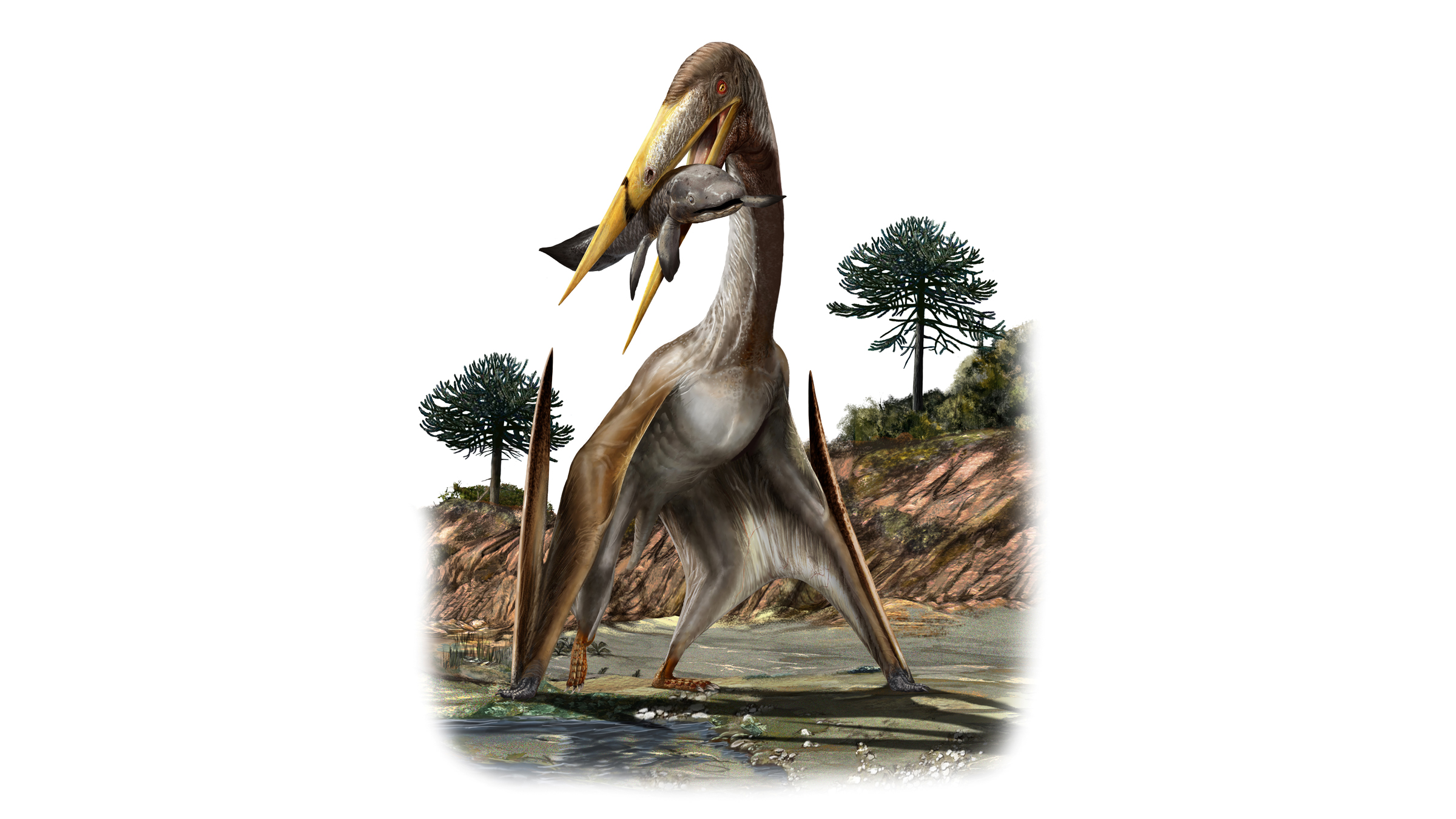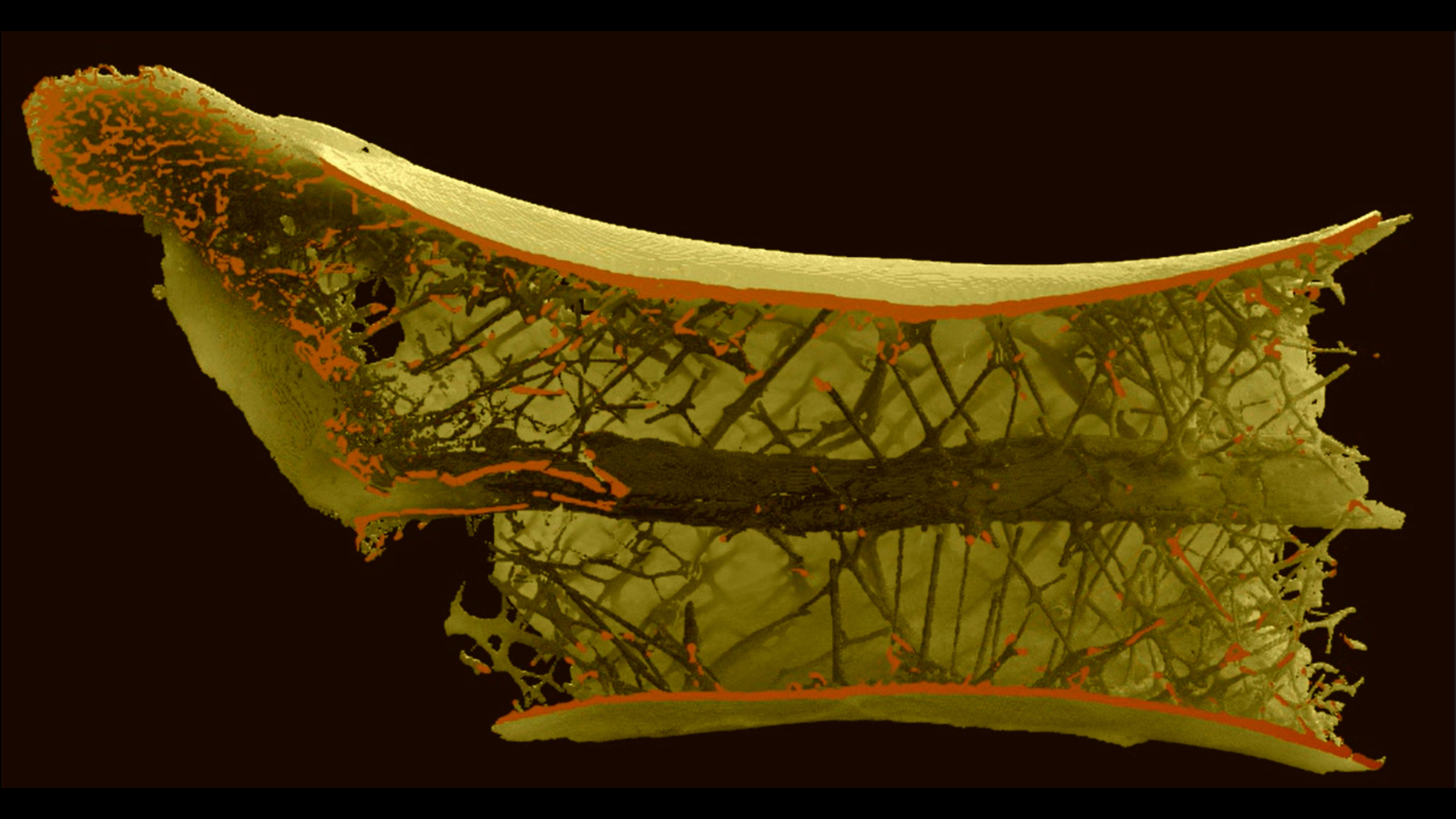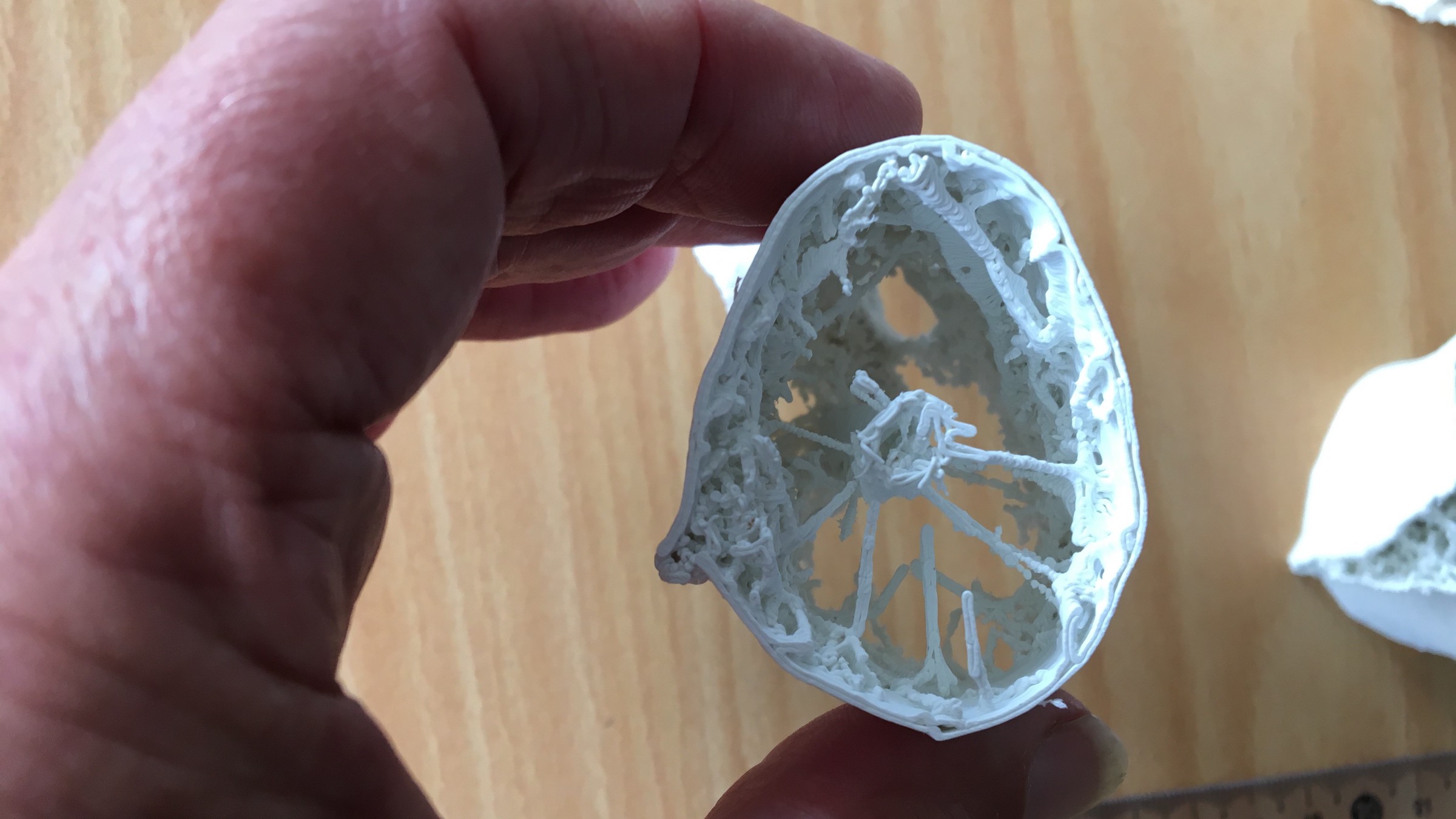Bizarre neck bones helped pterosaurs support their giraffe-size necks and huge heads
"It is unlike anything seen previously in a vertebra of any animal."

During the dinosaur age, azhdarchid pterosaurs — soaring reptiles that could grow as large as airplanes — supported their absurdly long necks and large heads during flight thanks to a never-before-seen internal bone structure in their neck vertebrae, a new study finds.
This unique structure, which looks like the spokes on a bicycle wheel, allowed the largest pterosaurs such as Quetzalcoatlus northropi, which had a wingspan of more than 30 feet (10 meters), to fly with necks that were longer than a giraffe's neck, the researchers found.
"One of our most important findings is the arrangement of cross-struts within the vertebral centrum [the inner wall of the vertebrae]," study co-researcher Dave Martill, a professor of paleobiology of the University of Portsmouth in the United Kingdom, said in a statement. "It is unlike anything seen previously in a vertebra of any animal."
Related: In images: A butterfly-headed winged reptile
The team found that in pterosaurs in the family Azhdarchidae, these rod-like structures connected the interior walls of the largely hollow neck vertebrae. These slender rods had an average diameter of 0.04 inches (1.16 millimeters), and they were "helically arranged along the length of the vertebra," Martill said. "Evolution shaped these creatures into awesome, breathtakingly efficient flyers."
Evolution shaped these creatures into awesome, breathtakingly efficient flyers.
Dave Martill, professor of paleobiology
Pterosaurs aren't dinosaurs, but lived alongside them after emerging during the late Triassic period, about 225 million years ago, until they vanished from the fossil record at the end of the Cretaceous period, about 65.5 million years ago.

Until now, researchers suspected that a pterosaur's neck bones had only a simple tube-within-a-tube structure, Martill said. But this proposed structure likely wouldn't have provided the long neck enough support for the pterosaur's head — which could be longer than 5 feet (1.5 m) — especially when it grabbed and carried heavy prey through the air while hunting.
Sign up for the Live Science daily newsletter now
Get the world’s most fascinating discoveries delivered straight to your inbox.
"These animals have ridiculously long necks," study first author Cariad Williams, who majored in paleontology at the University of Portsmouth and is now a doctoral student at the University of Illinois at Urbana-Champaign, said in the statement. In some pterosaur species, the fifth neck vertebra from the head is as long as the rest of the animal's body.
"We wanted to know a bit about how this incredibly long neck functioned, as it seems to have very little mobility between each vertebra," Williams said.

To investigate, they did X-ray computed tomography (CT) scans of a well-preserved Cretaceous-age pterosaur specimen (Alanqa saharica) discovered in Morocco. The results showed the helically arranged supportive spider web-like lines crisscrossing the insides of the neck vertebrae.
Load-bearing calculations of the neck vertebra showed that as few as 50 of these spoke-like supports increased the amount of weight the neck could carry, without buckling, by up to 90%, the researchers said. These spokes, together with the tube-within-a-tube structure, show how pterosaurs could have captured and carried heavy prey without injuring their own long necks.
The finding, which shows how "fantastically complex and sophisticated" pterosaur necks were, Martill said, was published online Wednesday (April 14) in the journal iScience.
Originally published on Live Science.

Laura is the archaeology and Life's Little Mysteries editor at Live Science. She also reports on general science, including paleontology. Her work has appeared in The New York Times, Scholastic, Popular Science and Spectrum, a site on autism research. She has won multiple awards from the Society of Professional Journalists and the Washington Newspaper Publishers Association for her reporting at a weekly newspaper near Seattle. Laura holds a bachelor's degree in English literature and psychology from Washington University in St. Louis and a master's degree in science writing from NYU.









